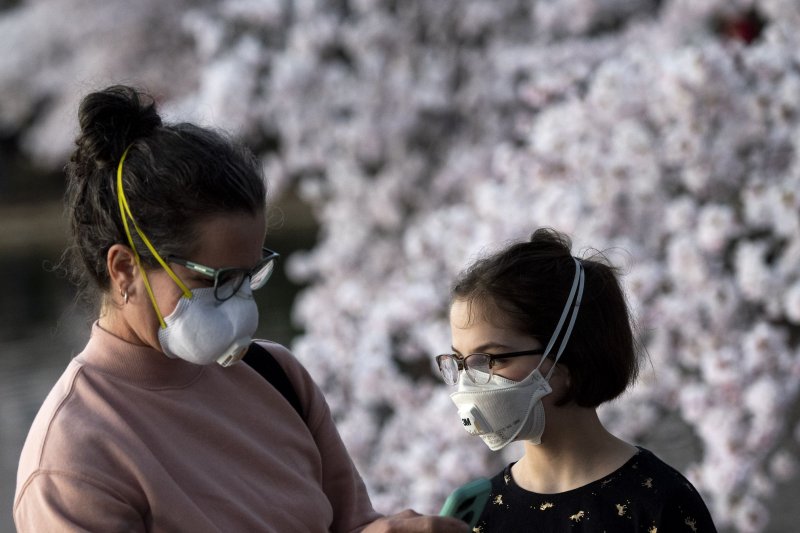More than 10% of household contacts of people with COVID-19 get the virus, a new study has found. File Photo by Kevin Dietsch/UPI |
License Photo
Feb. 26 (UPI) -- One in 10 people exposed to COVID-19 tests positive for the virus, according to a study published Friday by JAMA Network Open.
In the analysis of data on more than 7,200 confirmed cases of the virus in the Boston area, diagnosed between March 4 and May 17, 2020, more than 1,800 of the study participants' nearly 18,000 household contacts later were infected, the data showed.
Older adults who shared a home with an infected person were nearly four times as likely to catch the virus, the researchers said.
"A 10% transmission rate is actually high by many infectious disease standards, especially if you consider that many of these secondary cases occurred several days after the index case," study co-author Dr. Joshua P. Metlay told UPI.
That means "that the infectious status was known and appropriate infection control measures could have been in place," said Metlay, who is chief of the division of general internal medicine at Massachusetts General Hospital in Boston.
Household transmission of the flu can be as low as 1%, research suggests.
The coronavirus most commonly spreads from person-to-person via airborne respiratory droplets emitted from the nose or mouth.
Most virus transmission in Massachusetts occurred in residential settings, according to the state's department of public health.
For this study, the researchers tested the 17,917 household contacts of 7,262 patients with confirmed COVID-19 treated by physicians at their hospital on an outpatient basis.
Among those contacts, 1,809 later tested positive for the virus, the data showed.
Although most of these household contacts contracted COVID-19 within three days of the person they caught it from being diagnosed, some did not test positive until up to nine days later.
This means they may have been infected even after those sickened knew of their COVID-19 status and had self-quarantined, according to the researchers.
"Household transmission is a key route of spread of [COVID-19]," Metlay said.
Although "this study specifically looks at transmission in the home and not school or workplace settings, similar methods of reducing transmission likely apply in all these settings, including social distancing, hand hygiene and mask-wearing," he said.















